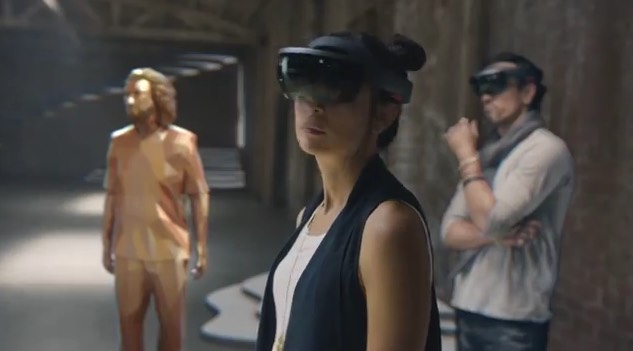 NEWS
NEWS
 NEWS
NEWS
 NEWS
NEWS
In what could be a defining moment in the nascent augment reality and virtual reality spaces, Microsoft Corp. has opened up its Windows Holographic platform, the platform that drives its Hololens augmented reality glasses, to third parties.
The announcement was made at the Computex in Taipei by Terry Myerson, Microsoft’s Executive Vice President, Windows and Devices Group, who explained that what this means in more simple terms is that we are likely to see a whole new range of augmented and virtual reality devices (described as “mixed reality”) coming to market powered by Microsoft.
Of note, the demonstration also included Windows Holographic powering a HTC Vive headset, confirming perhaps what many already suspected: the battle for virtual reality will be one fought out between Microsoft and the Facebook, Inc. owned Oculus.
“Today we focused on the next frontier – mixed reality. Providing devices with the ability to perceive the world, breaking down the barriers between virtual and physical reality is what we call mixed reality,” Myerson said in a blog post. “Imagine wearing a VR device and seeing your physical hands as you manipulate an object, working on the scanned 3D image of a real object, or bringing in a holographic representation of another person into your virtual world so you can collaborate. In this world, devices can spatially map your environment wherever you are; manipulating digital content is as easy and natural as picking up a box or sitting at a table; and you can easily teleport into your next meeting or travel together as a team.”
It can not be emphasized enough how huge Microsoft’s announcement is: while the Hololens may look great, scale in the industry will only ever be achieved through a platform that is available on many different devices, in the same way Microsoft defeated Apple, Inc. in the PC wars by allowing anyone to use MS DOS and then later Windows, while with a few short and brief exceptions, Apple refused to license its operating system to third parties.
The announcement isn’t simply a feelgood statement either, as Microsoft is dead serious about making Windows Holographic the common standard for augmented and virtual reality, and is already working with Acer, AMD, Asus, CyberPowerPC, Dell, Falcon, HP, HTC, iBuyPower, Intel, Lenovo, MSI, Northwest, and Qualcomm to deliver new holographic experiences.
“Today we invited our OEM, ODM, and hardware partners to build PCs, displays, accessories and mixed reality devices with the Windows Holographic platform,” Myerson concluded, in a day that may well be remembered for many years to come.
Support our mission to keep content open and free by engaging with theCUBE community. Join theCUBE’s Alumni Trust Network, where technology leaders connect, share intelligence and create opportunities.
Founded by tech visionaries John Furrier and Dave Vellante, SiliconANGLE Media has built a dynamic ecosystem of industry-leading digital media brands that reach 15+ million elite tech professionals. Our new proprietary theCUBE AI Video Cloud is breaking ground in audience interaction, leveraging theCUBEai.com neural network to help technology companies make data-driven decisions and stay at the forefront of industry conversations.